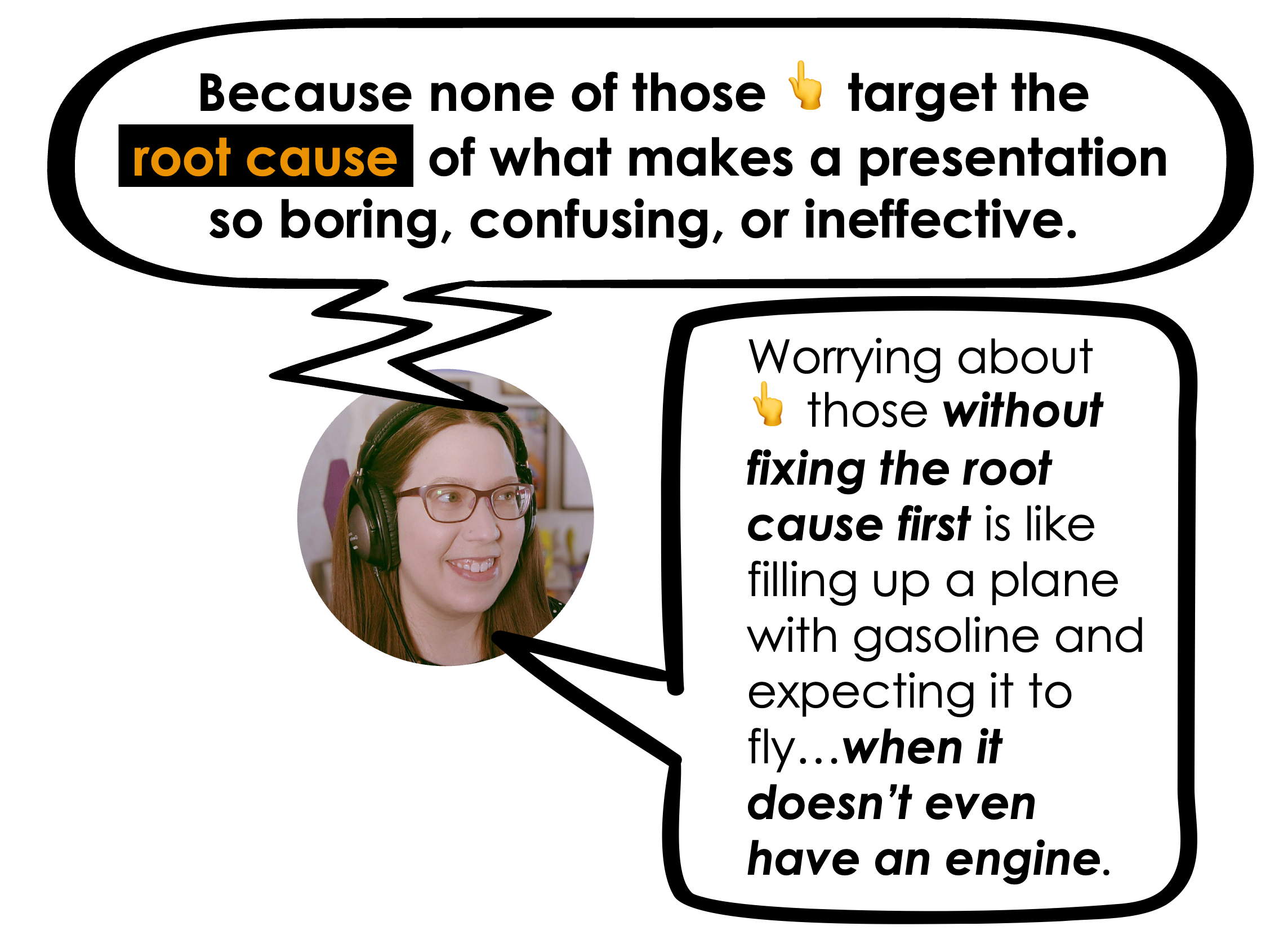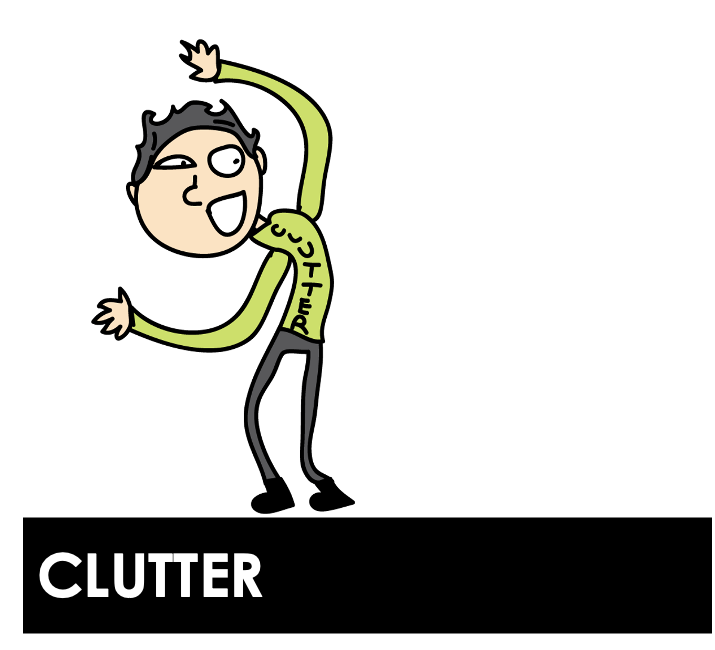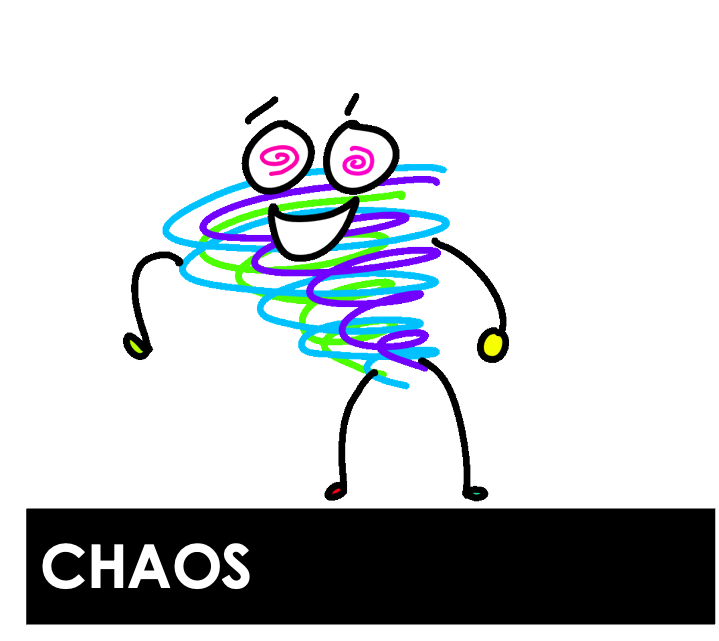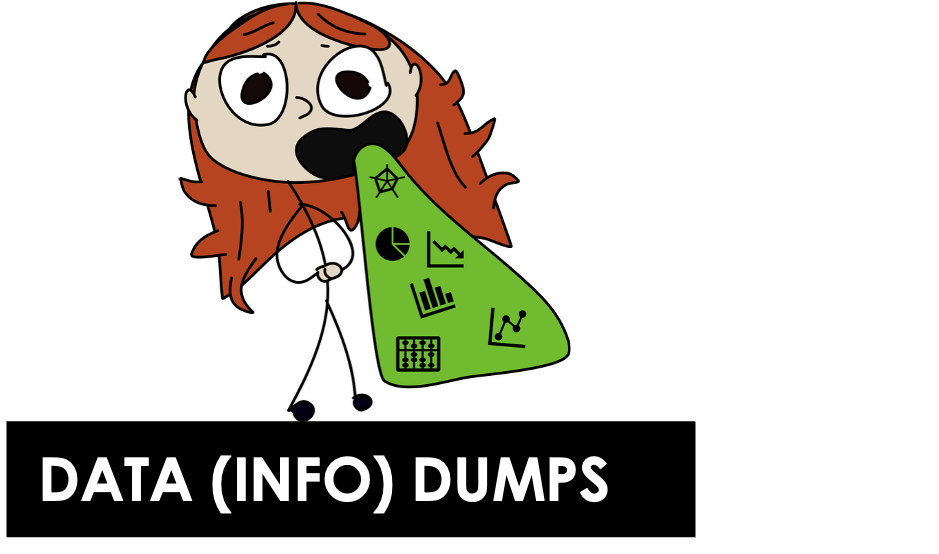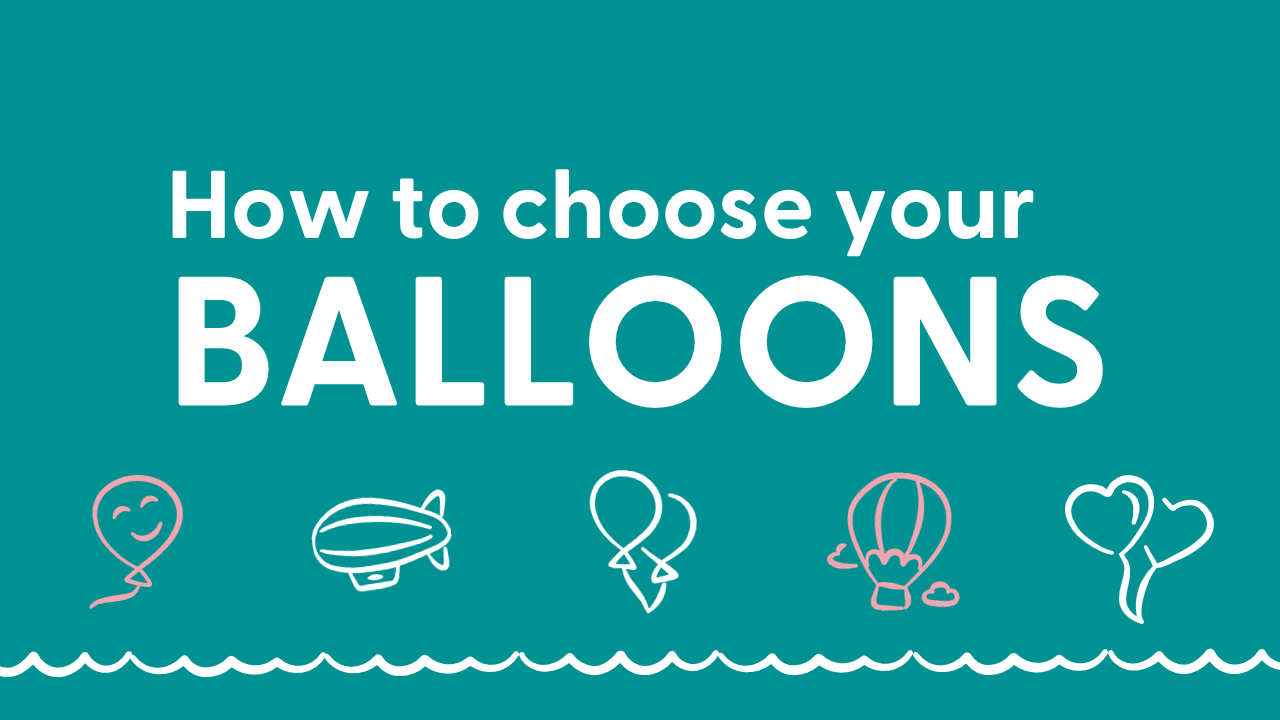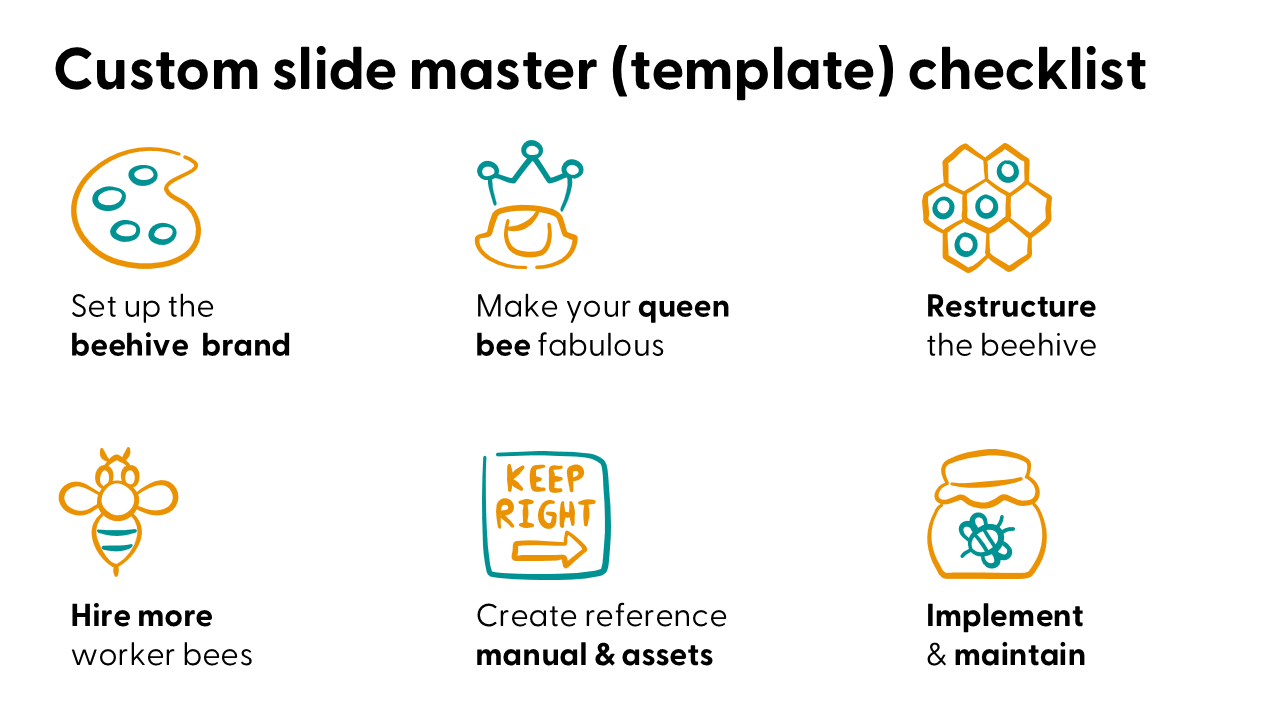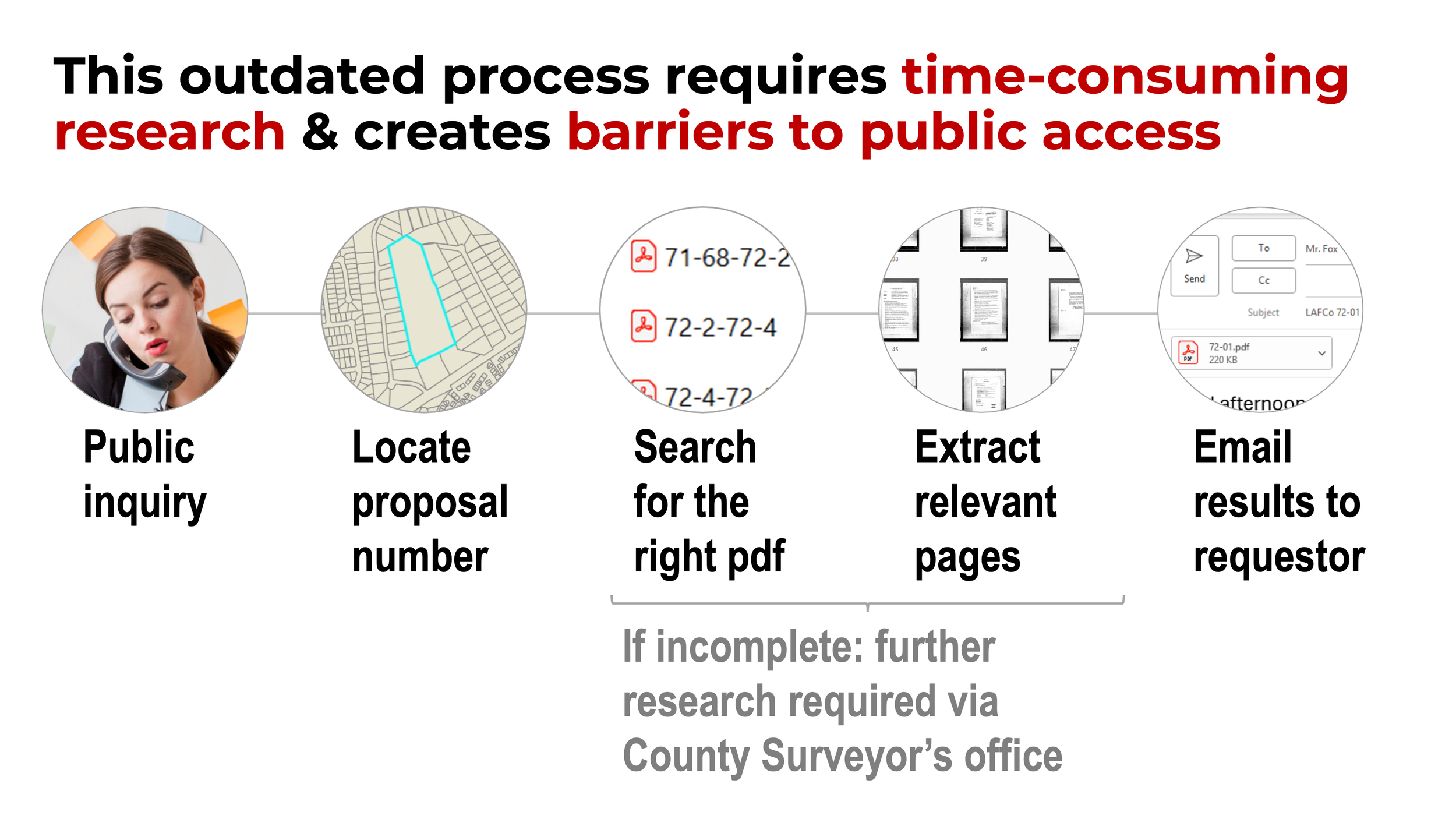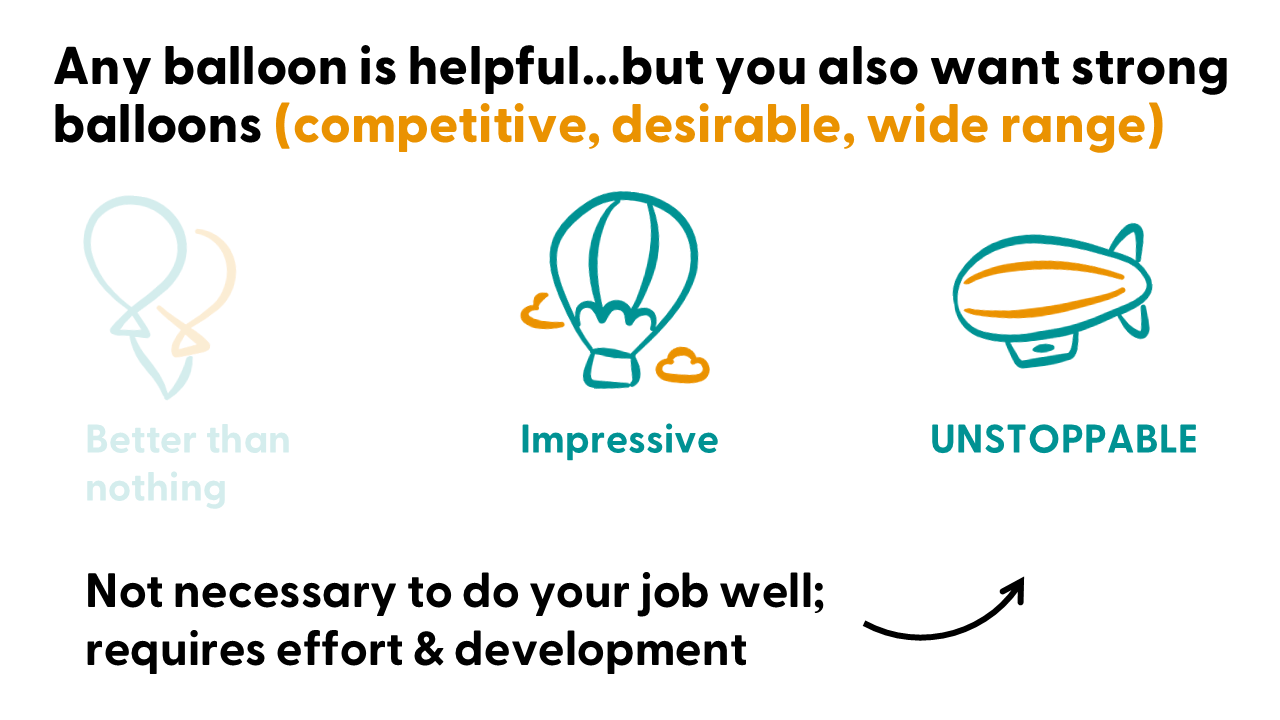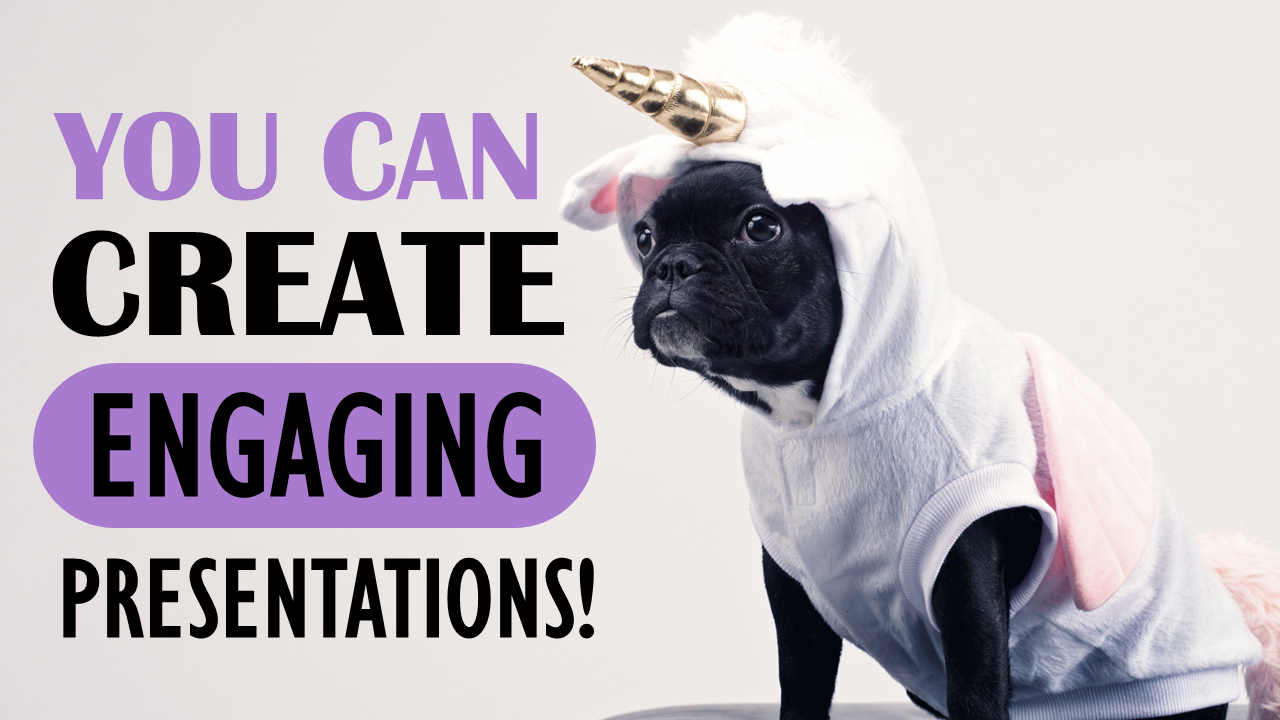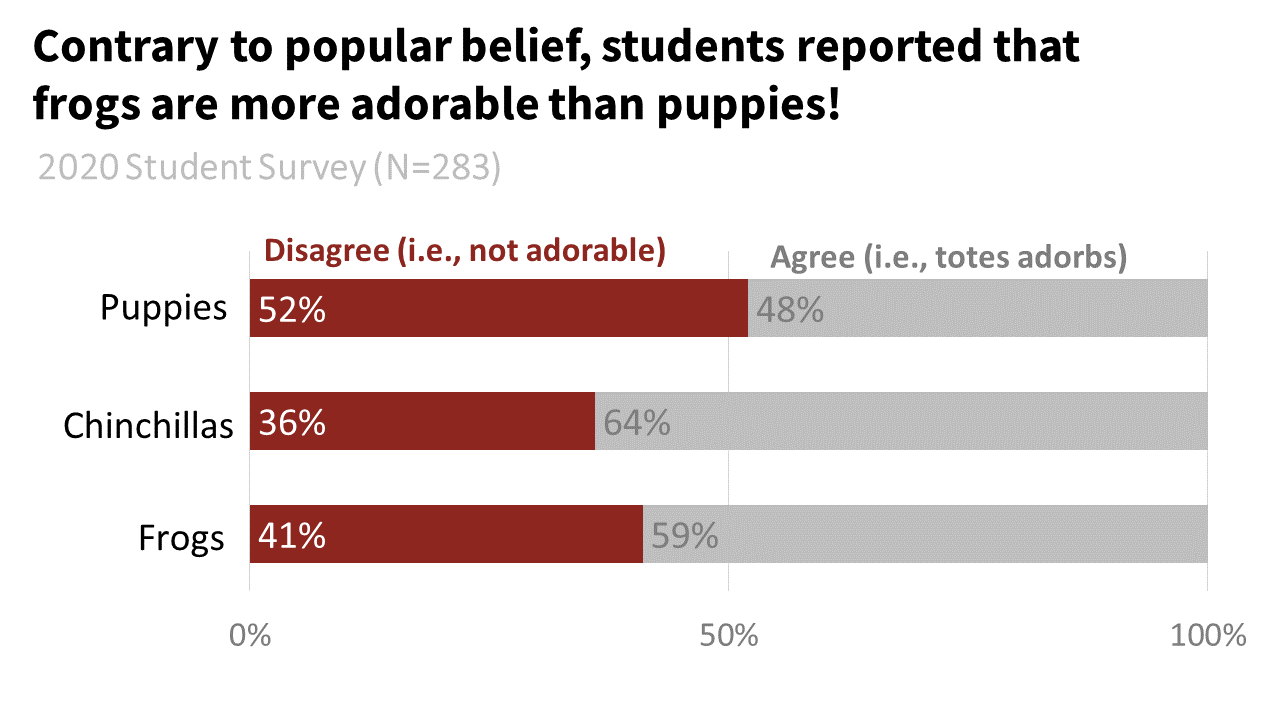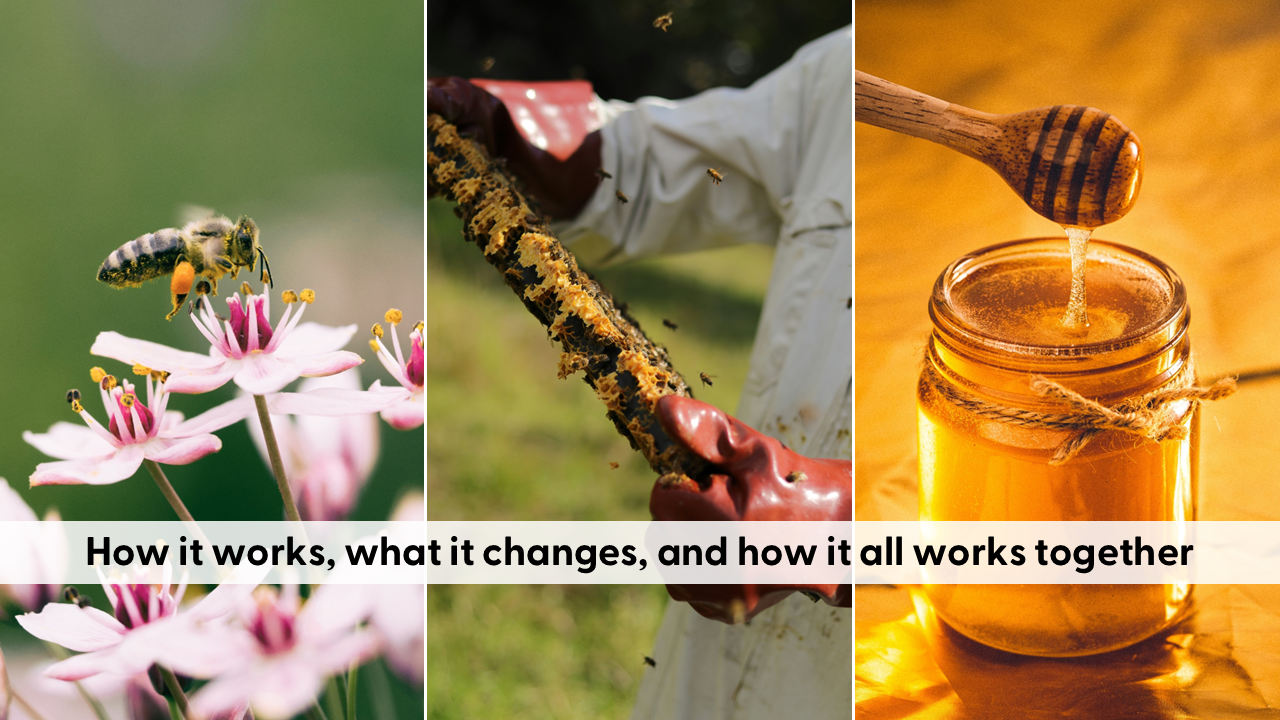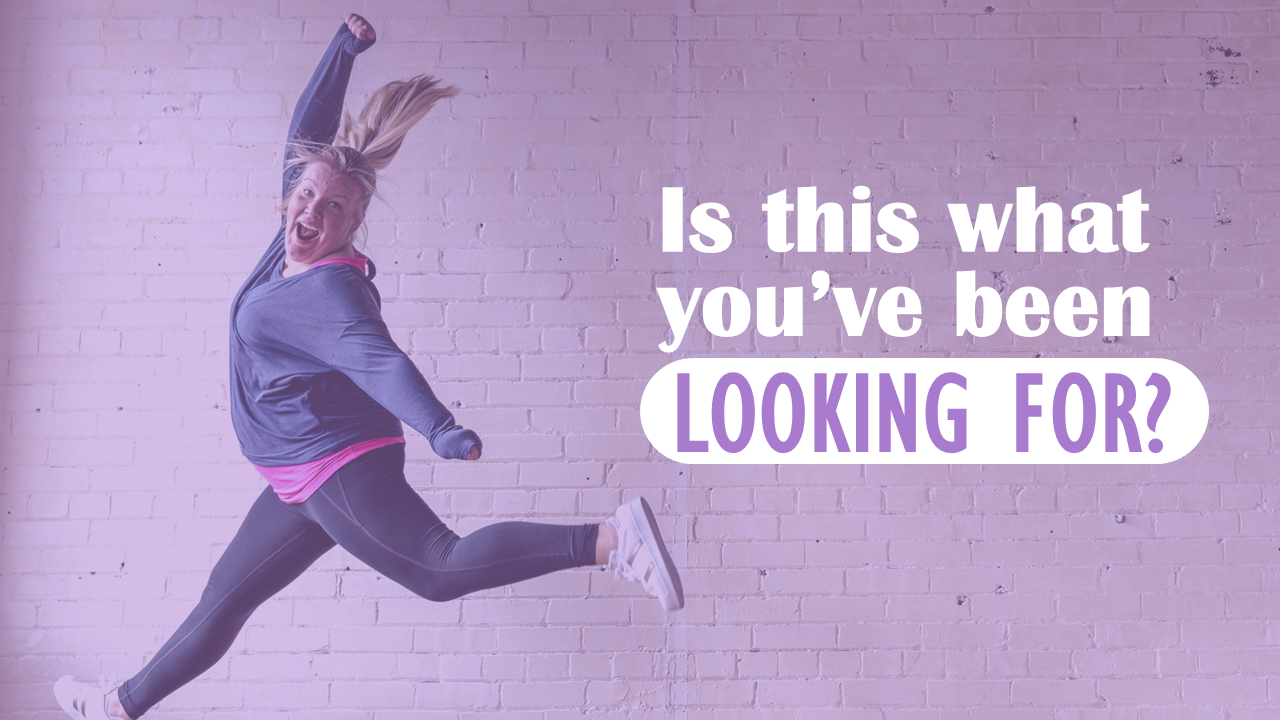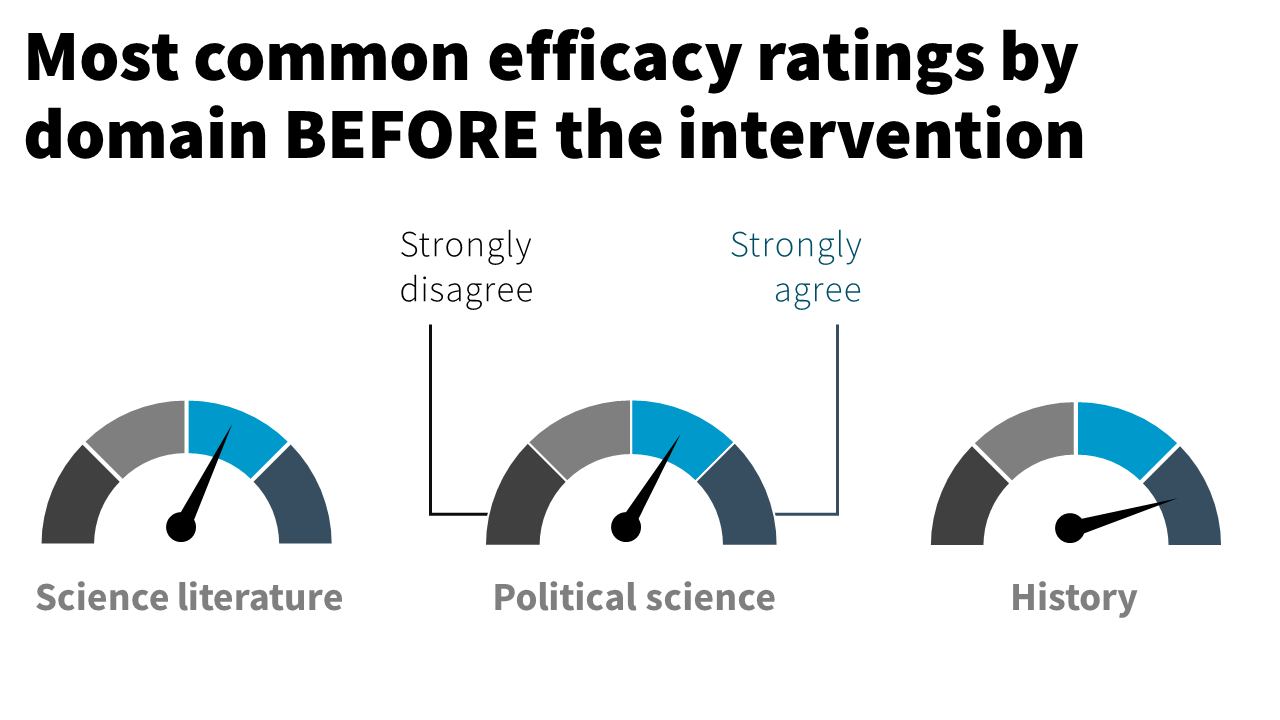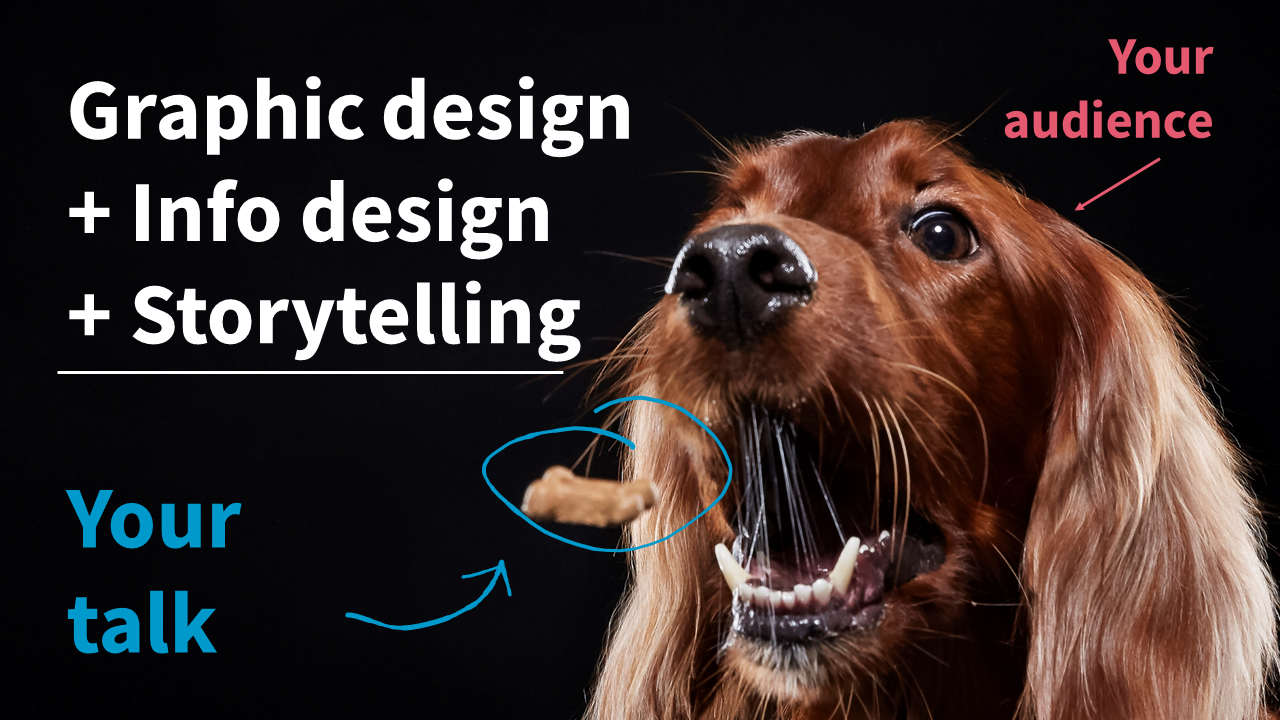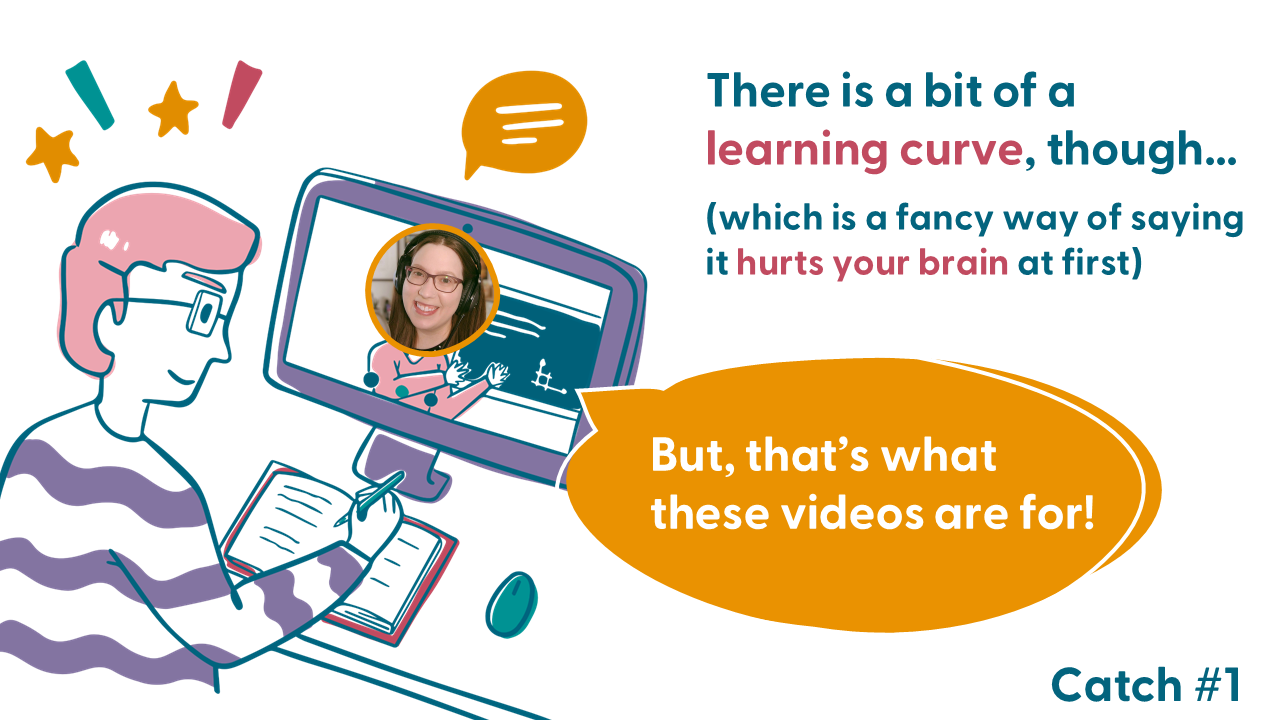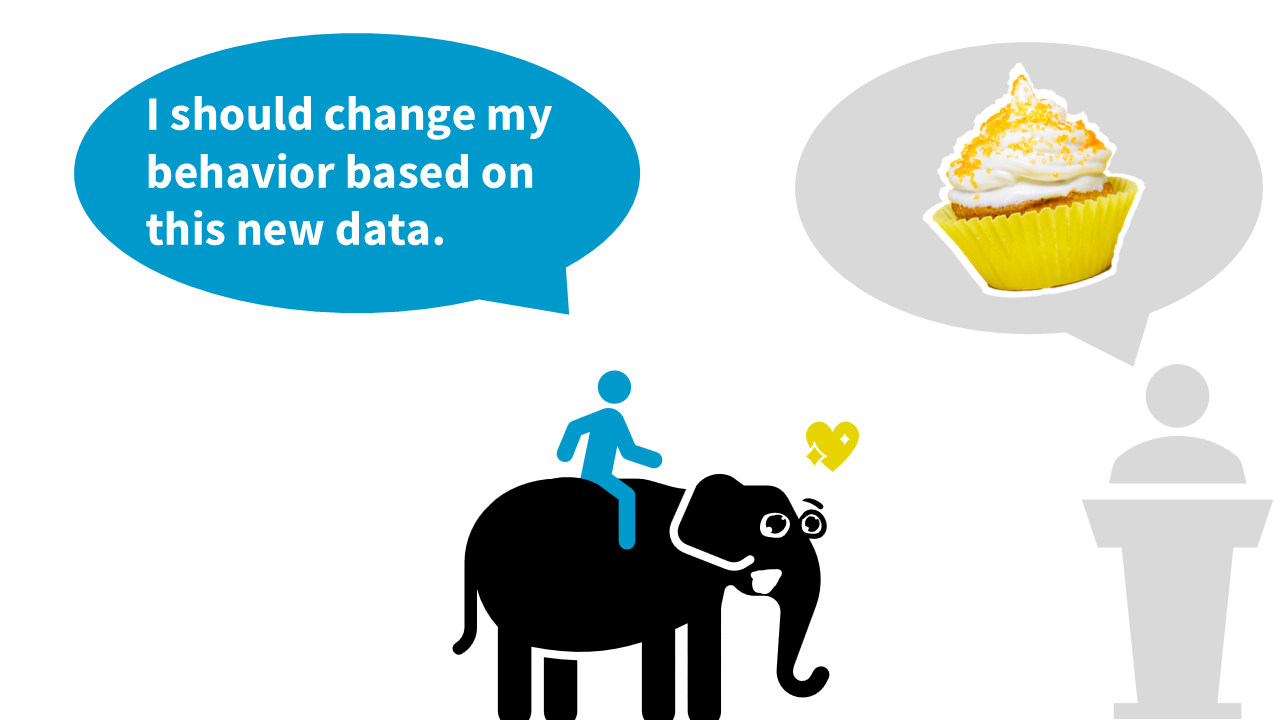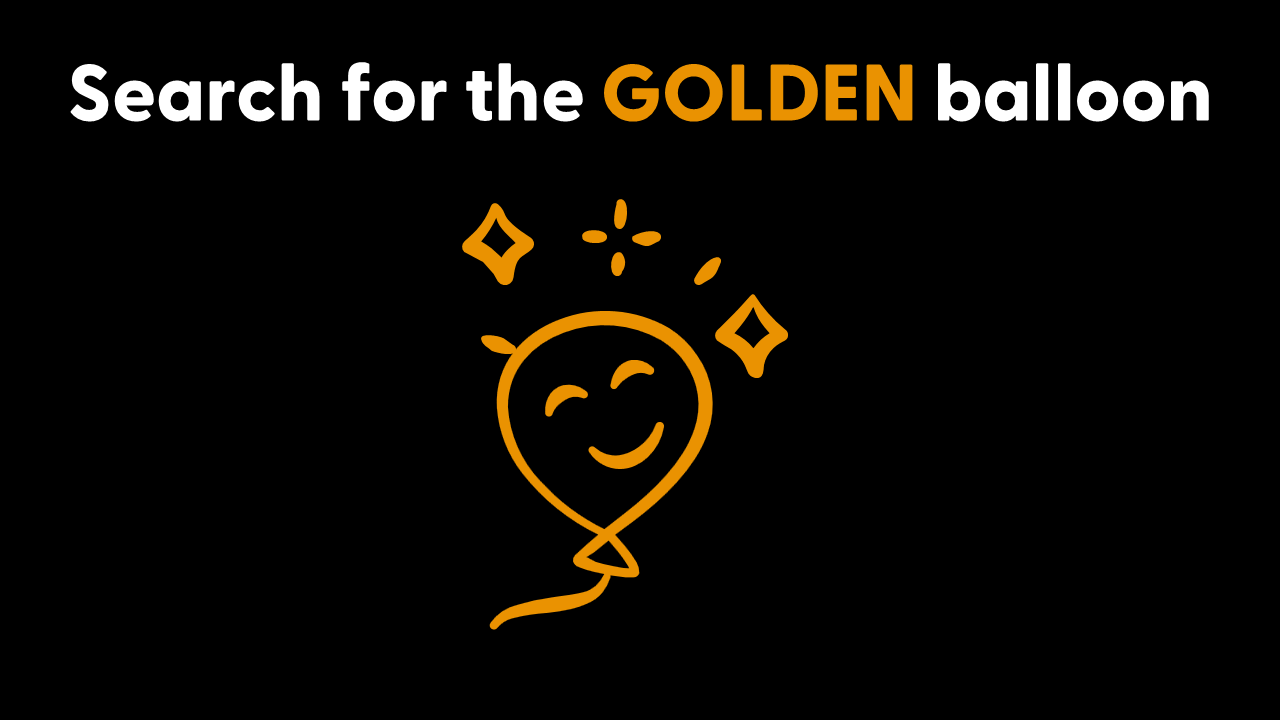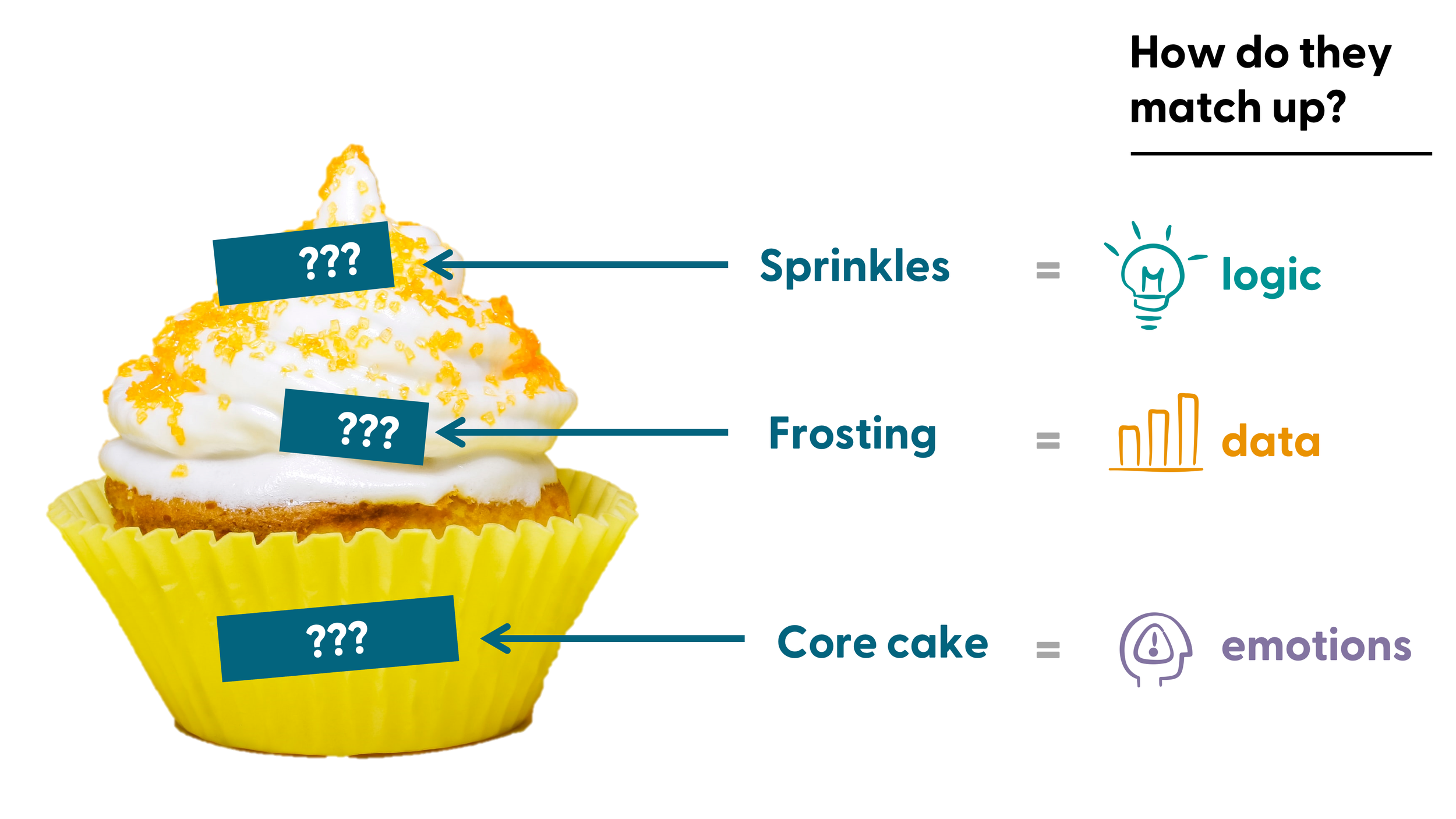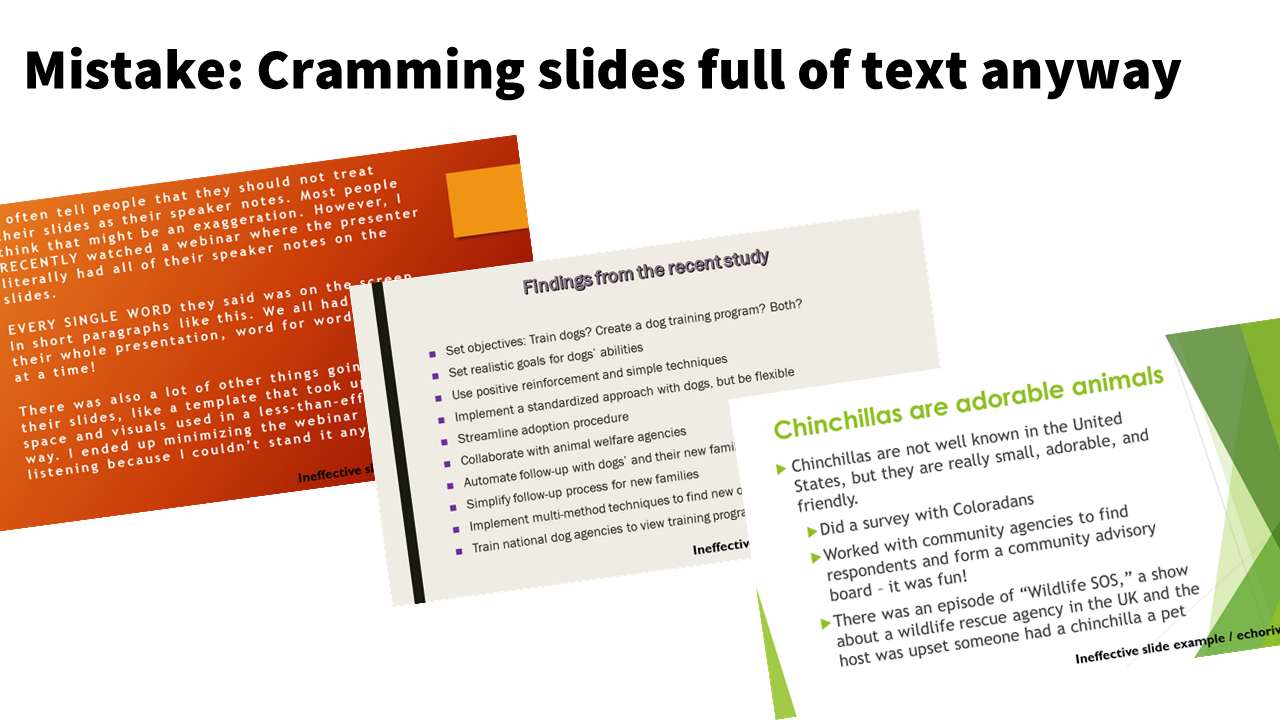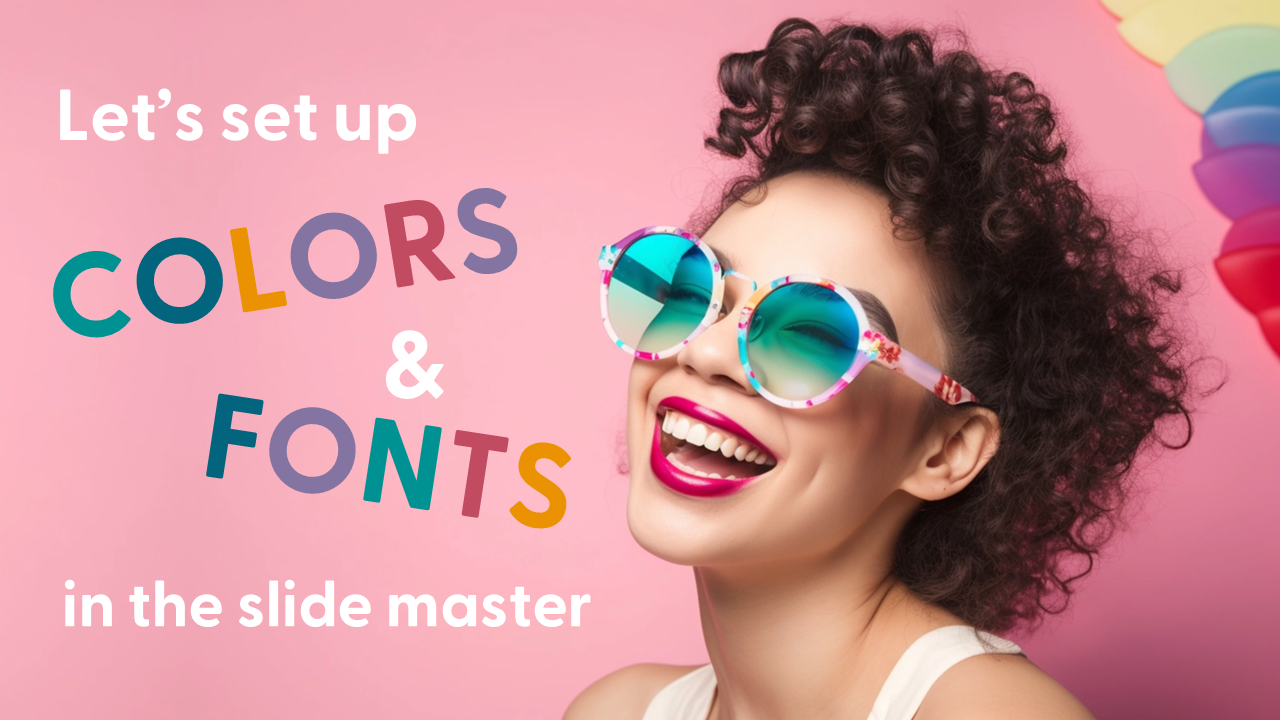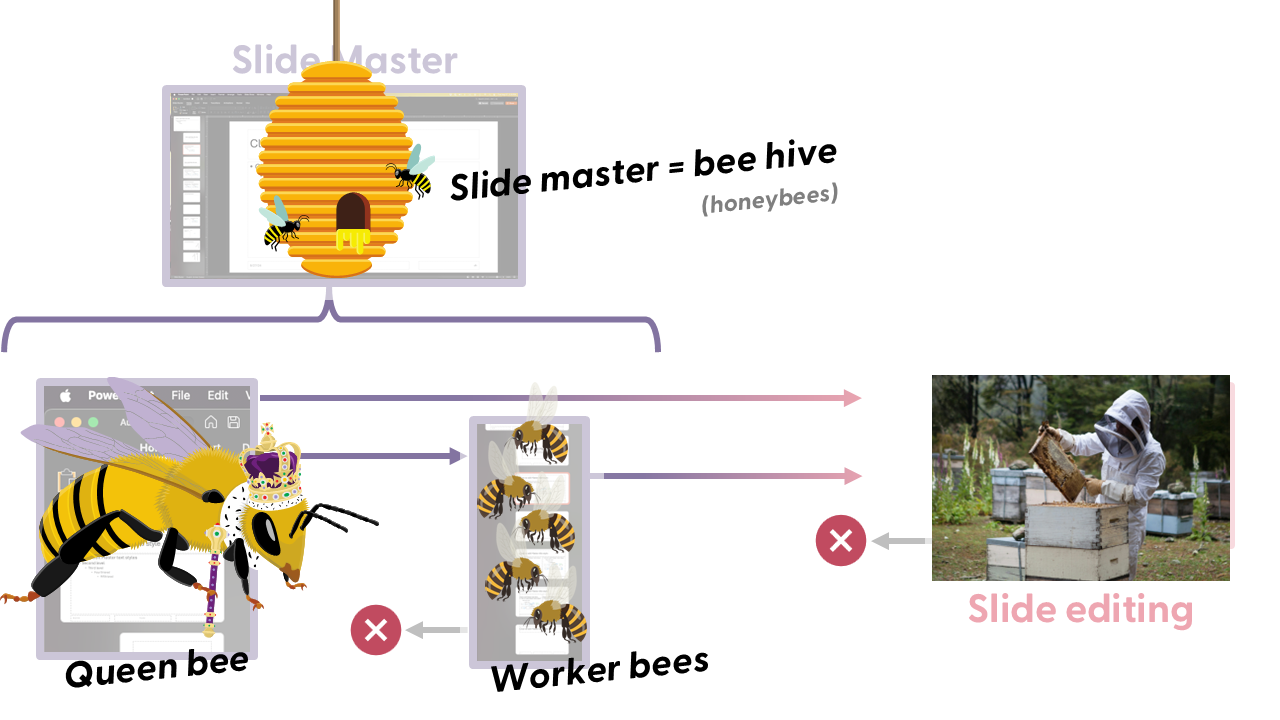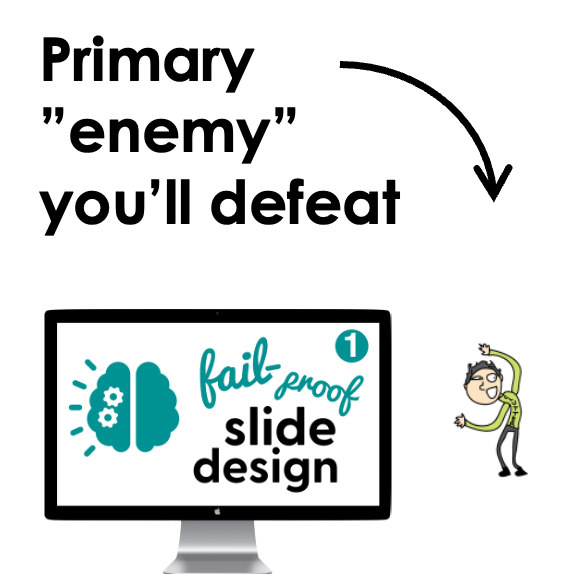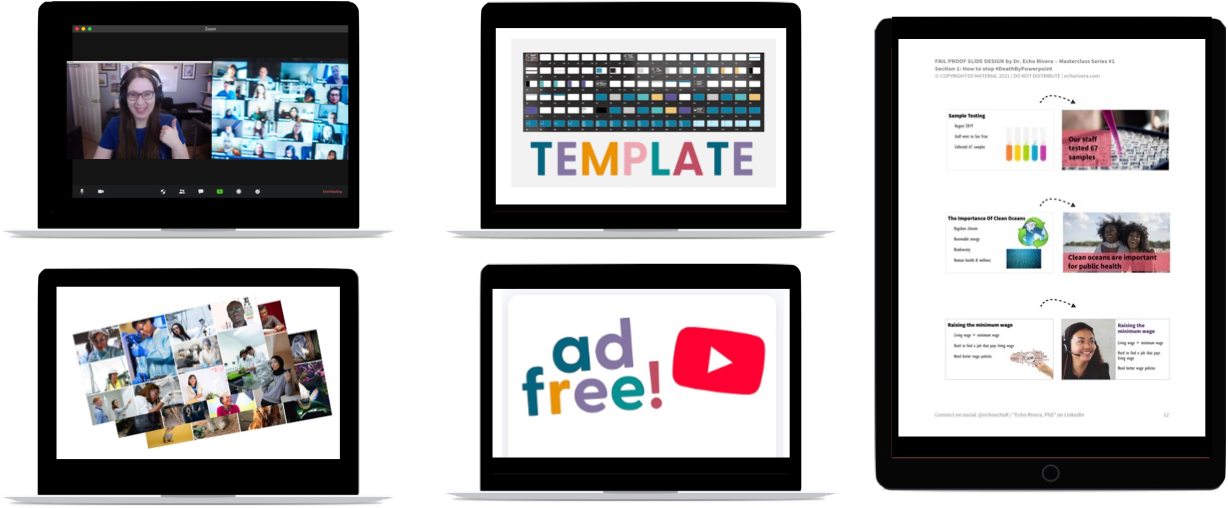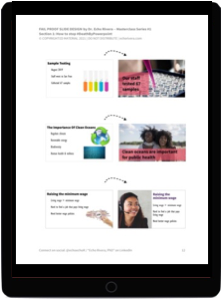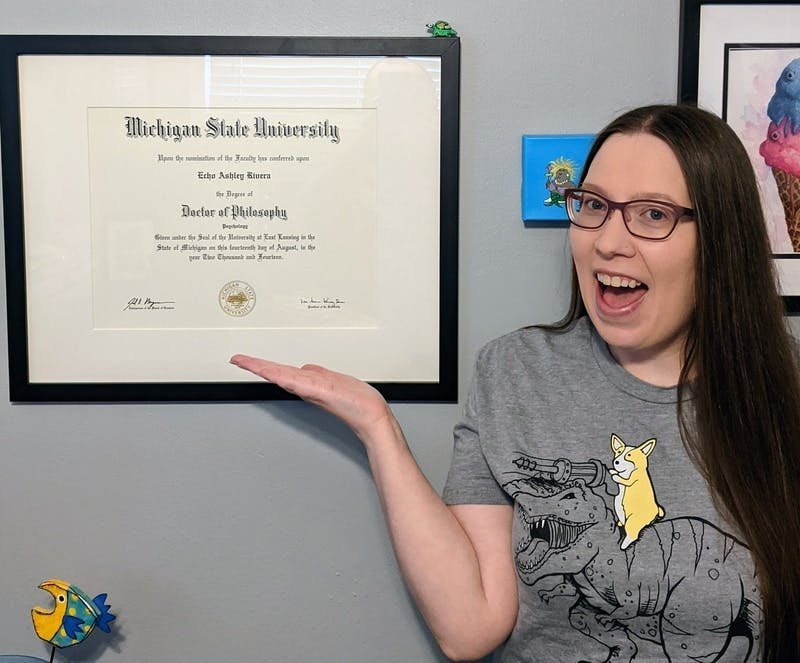Presentation Skills Professional Development Program
For professionals who want undivided attention from their audience, proof their presentations are actually making a difference, and confidence in themselves as a speaker. (Page is currently being updated!)
Does this sound like what you want when you give a presentation?
UNDIVIDED ATTENTION from an engaged audience (any audience).
PROOF OF IMPACT & confirmation that all your efforts were worth it.
CONFIDENCE in yourself as a speaker. AKA finally having that feeling of “I nailed it!”
But, when working on your presentation, you don’t want to…
SPEND AGES UPON AGES on every single presentation you make. (You’re way too busy).
STRESS OUT that you’ll forget what you’re going to say because you’re using more visual slides.
WORRY that you’re making the wrong slide design or presentation script choices.
Then I have a feeling you’ve already tried a bunch of things, like…
Ditched PowerPoint for another slide app like Canva.
Tried to use SmartArt or outsource the design to GenAI like Gamma or ChatGPT.
Applied Google’s or ChatGPT advice (such as “use as few slides as possible.”)
Fixed up your slides based on what you could piece together from online tips & tricks.
Spent hours searching for the ✨perfect ✨ template.
Tried to copy or reverse engineer ideas from good presentations you’ve seen.
Eliminated as much text as possible so your slides are almost entirely visual.
Built up your data visualization & storytelling skills, specifically.
…but it’s taking WAY TOO MUCH TIME or you’re not really seeing any evidence it’s worth the extra effort yet.
You’re stuck on a hamster wheel of never ending work (without reward) because none of those 👆 target the root cause of what makes a presentation so boring, confusing, or ineffective.
Spending time on those without fixing the root cause first is like filling up a plane with gasoline and expecting it to fly…when it doesn’t even have an engine yet.
So what’s the root cause 👇 of bad presentations in every industry, across the world? Cognitive overload.
COGNITIVE OVERLOAD
is when your audience member’s brain gets “overheated” & involuntarily shuts down and disengages. It’s the #1 reason your audience will disengage from a presentation.
But, it just so happens to be the most preventable…
(IF you intentionally design for it).
Join my visual presentation skills course and become a pro at preventing cognitive overload
Information design is your primary “antidote” against cognitive overload. In my program, you’ll learn how to apply an information design framework that lets you quickly whip together engaging, easy-to-follow, visual presentations that will keep your audience engaged enough to actually learn the thing.
Wondering if you need to care about cognitive overload?
If you give presentations and want your audience to:
Be fully engaged with undivided attention
Actually understand what you’re saying
Remember the key points you presented
Trust and believe what you’re saying
Be impacted in some way by your talk, lecture, or training
then…yes!
Cognitive overload is the biggest “enemy” for professionals who need to create informational, educational presentations (i.e., where you really want the audience to move through all these stages).
How do I know? In part, due to my PhD in psychology (but more on that later 😉)
You need to prevent cognitive overload because it’s like a wrench that grinds this whole process to a halt…Leading to a disengaged audience & you feeling like your efforts were wasted.
Build up your visual slide design + presentation script writing skills with 4 focused modules…
…And have an easier time applying it all with some handy implementation tools.
Cognitive overload is like a wrench that grinds the whole attention & learning process to a halt. But don’t worry, we’re going to make it easy to tackle. You’re going to stop it for good by “defeating” the 3 ways presenters accidentally cause cognitive overload >>>
Anything in your presentation (script or slides) that doesn’t need to be there.
AKA form over function
Anything in your presentation (script or slides) that is messy, scattered, or disorganized.
AKA neither function nor form
A presentation that fails to give the audience the mental breaks they need to stay engaged…or a presentation packed with content that just falls flat.
AKA function over form
You will “defeat” them ALL by using information design for effective presentations to make professional, powerful presentations that are…
Clear & concise
Easy to follow along with and understand
Captivating, interesting, mind-blowing, life-changing
AKA function x form (AKA information design)
✔️ graphic design
✔️ PowerPoint (tech) skills
✔️ psychology & cognitive science
✔️ storytelling
✔️ pedagogy
✔️ user experience & user design
✔️ visual hierarchy
✔️ vector & photo design
✔️ developing an eye for design
✔️ data visualization
✔️ effective communication
✔️ universal/accessible design
You’ll learn all of it
(without being overwhelmed)
This is the professional development program that teaches you how to leverage psychology and other skills to design visually-engaging, digestible presentations
Slides like these prevent cognitive overload, and are much easier to make than you probably think! (p.s. these are all PowerPoint slides) 👇
No creativity required
This is a step by step course—You only need the ability to follow directions.
Participant gallery of before & after slide designs
Here’s the framework you’ll learn
#1. Clear the clutter + Create an accessible “minimum viable” base design
The first step is to clear up some space for better design by removing clutter.
You’ll create a “minimum viable” base design, which are slides that:
Are more accessible
Look great as is (and can enough for one-time presentations)
Can be “upleveled” quickly and easily over time
You’ll get used to slides with less text, more visuals, and better pacing.
#2. Calm the chaos + Up-level slides with your own custom, creative visuals
The second step is to up-level those base designs. This is where you learn how to visualize any content you have, no matter how dry or technical it is.
You’ll learn a menu of design options:
ranging from low effort, medium effort, and high effort;
using using basic features like text boxes, shapes, animations, and icons.
You’ll also fix common issues that make the presentation too chaotic for your audience to follow. We’ll use simple structures and improve the balance between what you show with what you say. You’ll see a big difference in how much easier it is for your audience to follow along.
#3. Present quantitative & qualitative data effectively
Like course 2, this is an “upleveling” stage, but with quantitative and qualitative data as the focus. This is where you start telling data stories (without losing site of the data).
Never again slap a table or chart on a slide and stumble through your explanation. You’ll learn how to walk people through data on presentation slides so they understand and remember your key points.
#4. Storyboarding the ”wow” factor: How to captivate any audience, with any topic
The final step is to focus on the script/content (the storyboard).
This is when you learn how to ditch the information deficit model of communication, and gain the ability make any material more interesting and impactful (no matter how technical, dry, or complicated).
We’ll even cover how to tailor material to the audience, and cover public speaking tips for a solid, confident delivery.
And the
slide layouts you’ll learn
#1. Slide layouts you’ll learn
Text only slides (to replace the “Title & Content” layouts)
Core content slides with text ^ a photo (3 layouts)
#2. Slide layouts you’ll learn
Multiple photos
Key point/summary slides
Text & icon layouts
Section (agenda) slides
Title slides
Custom visuals like timelines, process, venn Diagrams, models, etc
#3. Slide layouts you’ll learn
Tables (incl. for qual themes/codes)
Bar charts (horizontal & vertical)
Stacked bar charts
Line graphs (incl. slope charts)
Pie charts, waffle charts, icon arrays
Lollipop graphs
Qual quotes
Gauge charts (speedometers)
#4. Slide x scripting x storyboarding you’ll learn
Opening hooks (go beyond “ learning objective” slides)
Strong closings (no more “thank you” slides)
Visual themes or models that change or update as you go
Special slides that help you give the audience a mental break (i.e., prevent cognitive overload!)
Audience interaction ideas (+ slides to encourage participation)
Tailoring to your audience
And you get
implementation resources
Quarterly office hours (zoom calls)
Get feedback on your presentation slide designs & scripts/storyboards
Get your questions answered
See examples from other members
Get support with struggles or challenges
Celebrate successes & wins
PowerPoint template made by me — with 100+ layouts (including data visualization templates & assets)
100+ layouts, includes data visualization templates & assets.
I took me 60+ hours to put this together because I wanted this to be something YOU could use for any presentation.
Includes training videos on how to use and edit the template to perfectly fit your content, brand, style, and needs.
The program itself is mainly software neutral, but I do recommend PowerPoint, so this PPT template + bonus training is included as a bonus.
Curated photo library of 1,200+ FREE stock photos you can download + mini-course on finding/using visuals
No need to spend hours searching for free stock photos. I’ve curated 1,200+ of them for you! (saves you 20+ hours)
It took 20+ hours to put together, plus I update them regularly. And, you get to keep access even after you’re done with the program.
Where to find free stock photos? Icons? What about copyright? I answer all those questions (and share links to my fav sites) in the mini-course.
Easy access to 60+ supplemental videos
PowerPoint tutorials, full-length webinar style talks, and other supplementary videos are available on my YouTube channel, More Than Powerpoint!
Course members get access to a private portal of these YouTube videos, so you can watch them without every having to leave the course (ad-free).
Plus, this private portal includes bonus content, such as answers to questions people posted in the comments.
Downloadable PDF handouts, files, and checklists
Every lesson comes with a downloadable handout that you can keep forever, and reference whenever needed.
Throughout the course, you will also have additional downloadable materials such as PDF checklists, presentation files, and more!
Here’s everything included in the program of 4 presentation skills courses + 5 implementation resources
Course #1: Fail-Proof Slide Design
Course #2: Visual Slide Design
Course #3: Presenting Data with Slides
Course #4: Captivate Any Audience
Quarterly office hours (with me, Dr. Echo Rivera)
60+ supplemental videos with bonus content
Photo Library + mini-course (saves you 20+ hours)
Custom PowerPoint Template (saves you 60+ hours)
Downloadable PDFs, checklists, and files
QUICK LINKS NAVIGATION
Let’s talk about what you’ll be able to do after each course.
It’s 💯 totally possible for you to turn those overwhelming “data dumps” into visually powerful presentations.
Yes, even if YOU:
are an introvert
are an extrovert
are nervous and have public speaking anxiety
dread working on or giving presentations
have dry content or educational, data-heavy presentations
are busy and can’t take forever to design slides.
“suck at design” and aren’t a “visual thinker”
present in-person, as a recorded video, AND/OR as live webinars
Yes, even if your AUDIENCE includes:
distracted students with the attention span of a potato 🥔
grumpy academics who fight to keep #DeathByPowerpoint alive in their own lectures
data people who want to see all the data
“non-technical” people who don’t need all that data
the community or “lay” audiences who have zero tolerance for mid lectures 🙅♀️
people with physical, learning, or mental disabilities/difficulties
policymakers, civil servants, state/federal/govt staff where politics or bureaucracy can get in the way of evidence-based decision making
Yes, even if your MATERIAL is:
Entirely data-based or data-heavy
Qualitative data
Traditionally considered a “dry” topic
Is an emotionally charged or difficult topic for people to hear
Something that doesn’t lend itself to visuals easily (hard to visualize)

This masterclass is the shortcut.
Let’s take a tour of each course that will turn you into a more confident and powerful speaker.
It all starts with course #1:
Fail-Proof Slide Design
From INACCESSIBLE to ACCESSIBLE slides.

Stop me where I go wrong, but right now you’re probably:
Spending a lot of time manually formatting things like font color, font size, and font type.
Wanting to use less text and more visuals, but not sure what layouts to use or how to design photos with text.
Messing about with slide templates (even though they’re inaccessible and violate basic design rules).
Wanting to use less text, but worried you’ll forget what you wanted to say.
Wanting to use less text and more visuals, but not sure how to find good (free) stock photos.
Limiting how many slides you use in a presentation because you think it’s bad to have a lot of slides.
🤫 p.s. part of this is because you’re completely unaware of the bad habits you’ve picked up over the years, that you’re stuck repeating without even knowing it.
But fear not, friend! This is all about to change because…
After Fail-Proof Slide Design, you will know how to…
Find the perfect image for your slides, super fast.
3 wildly easy layouts for images + text, so you don’t even have to think about it.
Still present slides that are only text (if needed), but use design to make them accessible & actually look nice.
Avoid the #1 element (that all audiences hate) to never have in your presentations EVER AGAIN.
Use the ONE animation that actually helps people follow along with you (and how to automate it when creating slides).
Use the PowerPoint Slide Master to automate the text design formulas (formatting) you learned in this course!
Determine whether you’ve used the correct number of slides in a given presentation.
Which means that you will soon…
Spend less time on all that boring formatting, because you know how to use your slide software to automate most of that.
Have slides that are more accessible than before, which every audience will appreciate!
Be free from those bad habits (like using slide templates or AI designs) that were wasting your time.
Be having a lot more fun searching for free images, because it no longer feels like a slog just to find the “one perfect” photo.
Quickly and easily choose a layout design for slides that will have both text and images.
Have less text on a slide while also being confident that you will not forget what you wanted to say (no memorization required!).
Use the right number of slides in a given presentation.
End that “wall of text” feeling once and for all 🙌
Course #2: Visual Slide Design
From “I’m not a visual thinker” to “OMG! I know exactly how to visualize this!”

Let me guess, right now you are:
Unable to visualize your ideas and avoiding blank slides because you don’t know what to do with all that empty space.
Telling your audience things like “I’m not going to read that to you” as you proceed to talk about stuff not even on your slide (spoiler: that’s inaccessible).
Using slide titles to constantly remind your audience what section of the presentation you’re in (e.g., “introduction, continued” across like 10 slides).
Trying to create your own designs using shapes, text boxes, and icons…but something just doesn’t look right.
Trying to use SmartArt or Design Ideas (or AI design) to present your material in a “more visual way.”
🤫 p.s. part of this is because your creative side has been stifled for years so you’re convinced that you don’t know how to think visually (but I promise, that’s not true!!).
But guess what, my friend? This is all about to change because…
After Visual Slide Design, you will know how to…
Use visual hierarchy (and other graphic design principles) to overcome your discomfort with using blank slides.
Leverage the power of a popular storytelling medium to design your slides—and entire presentation—in engaging ways.
End the inaccessible bad habit of making people read from your slides while you talk about something different than what’s on the slide.
Use simple shapes and text boxes to create custom visuals for almost anything you need: timelines, concept models, statistical models, logic models, visual representations of your concept, etc.
Begin storyboarding your presentation more effectively by adding one simple type of slide to your presentations.
Choose and use icons quickly and effectively, and hack/edit them as needed when they aren’t quite perfect as is.
Use a combination of strategies you learned in this course and course #1 to share quantitative data without even needing a graph.
Which means that you will soon…
Realize blank slides are your favorite places to start, because you know how to visualize your ideas.
Be able to whip together just about any visual you need by using slide software basics like shapes, text boxes, and icons.
Never again have to rely on clunky, goofy, SmartArt or Design Ideas (or AI design).
Align your slides and what you say during the presentation (which makes your presentations even more accessible).
Realize that you do have a creative side, which you can leverage to professionally share information in more visually engaging ways.
Unlock your creative genius!
Course #3: Presenting Data with Slides
From defaults & rainbow graphs to sleek, professional data visualizations.

I see you. Right now you are:
Sharing as much data as possible, because you think that’s what your audience wants (or needs).
Completely stuck on how to share qualitative data in engaging, visual ways (usually because it’s mostly quotes and themes)!
Sharing a massive amount of data in a presentation, because you aren’t sure what point you actually want to make.
Creating “skittle” graphs (rainbow graphs) because you desperately hope that using more color will somehow make your graph easier to understand...or look better (spoiler: it does neither).
Setting up your graphs in the same order as your stats output, without rethinking the order you present the data in.
Putting all your data in one graph and then spending forever talking people through that one graph because you think that’s how you’re supposed to share complicated data (spoiler: it’s not).
🤫 p.s. Part of this is because you’re trying to share too much data all at once and no one has taught you how to storyboard your data.
You know what I’m going to say next. This is all about to change because…
After Presenting Data with Slides, you will know how to…
Avoid the most common mistakes researchers make when sharing and designing their data (quant and qual).
Why you should never present basic quant data as a table (e.g., demographics table), and what to do instead.
How to design quantitative data, such as pie charts, waffle charts, icon arrays, line graphs, bar charts, and stacked bar charts (Likert scales).
How to design qualitative data, such as Venn diagrams, participant quotes, speedometers/gauge charts.
Implement data storyboarding foundations by learning how to present with clarity.
How to use animations to tell powerful, mind-blowing data stories.
Which means that you will soon…
Feel totally confident that you’re sharing data in a professional, sleek way (which boosts your confidence overall).
Realize simple graphs that are designed & storyboarded well are often the perfect data visualizations (for quant and qual), and that you don’t actually need to use Tableau or anything fancy.
Know how to figure out your key message before you even start working on your graph, so your audience can leave the presentation with a solid understanding of the data you presented.
Be able to share only the data you need to, in that moment, so that your audience is never overwhelmed by your dataviz.
Know how to design quantitative and qualitative data, so your presentation design is balanced across all data visualizations.
Use sleek design principles to highlight the key point you need to make, in that moment, which makes it super easy for your audience to stay with you and only focus on the part of your dataviz that you need them to focus on.
Use advanced design strategies and animations to make your data come alive and blow your audience’s mind because of how engaging your data visualizations were (even though you didn’t even use Tableau 😉).
Tell powerful data stories (quant & qual)
Course #4: Captivate Any Audience
From DATA DUMPS to CAPTIVATING presentations that make a lasting, positive IMPACT on every audience.

(Deep breath). Right now you are:
Revising your presentation over and over and over again, and exhausted from the process.
Unknowingly giving your audience mental “whiplash” because of the order you choose to present your information in.
Beginning your presentations with learning objectives, the agenda, logistics, and/or speaker bios.
Unintentionally spewing “data dumps” at your audience, because that’s what you’ve been taught to do.
Ending your presentations with a generic “thank you” or “questions?” slide that just has your contact info.
Constantly facing “writer’s block” (aka “speaker’s block”) because you don’t know what you should include.
Constantly frustrated because you always seem to create talks that are too long at first, but you don’t know what to cut—everything seems so important!
Unsure how to tailor your presentation to different audiences, especially when it’s a “non-technical” or “non-research” audience.
Nervous because you’re presenting about evidence-based policies, diversity, equity, inclusion, and social justice and your audience is defensive or hostile to that.
🤫 p.s. Part of this is because you start your presentation prep by asking “what do I want my audience to know” and/or because you’re still using written outlines to plan your content. Both of those make your life harder!
Ok, let’s do this one last time. This is all about to change because…
After Captivate Any Audience, you will know how to…
Use the storyboarding formula to make ANYTHING engaging for ANY AUDIENCE.
Avoid the current default model of communication that is tragically ineffective.
Apply a new model of communication is both fun and simple to use (and, of course, more effective).
Understand the psychology of your audience and share your info in more relatable ways.
Confidently decide what to include in your presentation AND what to leave out of your presentation.
Use storyboarding strategies to choose a clear and coherent order for your presentation.
Craft an opening hook that, within the first 30 seconds, convinces them to watch from start to finish (and that leverages current evidence about the primacy/recency effect).
Stop ending on a whisper, and end with a strong call to action (even for class lectures!) that leverages current evidence about the primacy/recency effect.
Appropriately deal with (or prepare for) audiences that might be resistant, hostile, or defensive (particularly relevant for people who talk about diversity, social justice, inclusion, and equity)
Which means that you will soon…
Feel more joy when working on your slides, and way less frustration. (Warning: you may be caught laughing at your own jokes or gleefully cheering at the creative way you just figured to present that “dry” content!).
Create a better first draft of your presentation, which will cut down on how much time you spend revising it (or, at least, stop that feeling you’re just spinning your wheels).
Create such a captivating presentation, that your audience might even forget social media exists.
Be able to tailor your presentation to different audiences, with minimal revisions and no overhaul needed.
Witness the moment, in real time, that you just changed someone’s mind or made them think of something in a new way.
Build trust and connect with your audience in ways that you never thought was possible (which pays off in dividends when you need to get through dry or complicated material).
Suddenly want to do a TED/TEDx talk, because you’ve realized that you have an idea worth sharing AND you now have the skills to get up on that stage and share it like a boss.
Vanquish data dumps (info overload) once and for all!

Being a skilled presenter (AKA visual communicator) feeds 2 birds with 1 scone. 🐦🍪🦜
How’s that?
Having a creative outlet and knowing that your work is meaningful are 2 key ways to prevent burnout.
Few things are more professionally creative than a visually engaging presentation + you’ll literally see the difference you’re making in real-time among your audience.
It’s one of the few burnout prevention strategies that you actually have control over!
Here’s what happens when you develop these highly valuable presentation skills:
Be a researcher who excites people about your work and moves your field forward.
Create presentations with less stress and more efficiency!
Be a professor whose lectures captivate and inspire students!
Have more fun at your job, impress your boss, and become an invaluable powerhouse at work!
Be a speaker who can move hearts, change minds, and make people take action!
Have confidence in your slides, your info, and most importantly—confidence in yourself.

To sum it up: we’re talking LESS anxiety, MORE confidence.
AKA stop being held back and actually enjoy giving presentations for once.
It’s time to vanquish imposter syndrome. 😤
🤩 ENROLL NOW 🤩
This Presentation Skills Masterclass Training Bundle includes6 or 12 months’ access to:
Course #1: Fail-Proof Slide Design
Course #2: Visual Slide Design
Course #3: Presenting Data with Slides
Course #4: Captivate Any Audience
The Visual Database Add-on
The custom PowerPoint Template
Access to updates made while enrolled
Access to join the zoom sessions

Share your knowledge and exciting research WITHOUT FEAR.

This is the year that you master creating presentations that matter—a skill that will never go out of style. 😎
Hey there 👋🏻! I’m Dr. Echo Rivera.
I’ll never forget the time I sat down, excited, to watch a new webinar from a well-respected scholar in my field….only to be so bored within the first 5 minutes that I stopped watching.
I wasn’t even mad at the speaker, but in that moment my heart broke. 💔
Why? Let me give you the backstory ~
I earned my PhD (Community Psychology) in 2014 and then worked at a nonprofit research & evaluation center for 3 years. In all, I spent over 14 years dedicated to research and evaluation.
My research focus was on (ending) gender-based violence using intersectional, community-based approaches. While fulfilling, I realized we had a major problem. All systems of oppression are fully connected, yet many social justice researchers & practitioners are heavily siloed.
Even worse, literally everyone had the exact same struggle 😩—their presentations were dry, boring, confusing, overwhelming, or underwhelming.
I became massively overwhelmed and frustrated that all these brilliant people, doing important work that could literally reduce systemic oppression, were effectively whispering into the void of their own silo.
I grew increasingly anxious that we wouldn’t see major positive social change in my lifetime. I’m not even kidding when I say it started to keep me up at night.
But it was in those sleepless nights that an idea started to form. 🌜✨
I didn’t realize it at the time, but starting in undergrad I began learning a secret weapon. Born out of my intense fear of public speaking, I poured excessive amounts of energy into my class presentations. I started to hear things like, “That was the best presentation ever” and “Damn, I wish our professor lectured like that!”
That turned into conference presentations, evaluation finding presentations to the client, and other high stakes professional presentations. I continued to hear “That was the best presentation ever” and “You’re the first academic I’ve ever understood, you make this technical stuff sound so easy.”
While I was seeing head nods and captivated audiences, my colleagues were seeing blank eyes staring into space.
While I was hearing, “you changed my mind today, thank you!” my colleagues were hearing crickets.
Finally, one night it all clicked together.
I realized, I can’t personally make all the different fields of research collaborate and break down their siloes. But, what I could do is take what I’ve learned over the years and help make everyone a powerful speaker. 💪
And so I decided to center my work around one goal: To skyrocket the number of powerful speakers who use data to make the world a better place. 🚀
My mission is to make sure no respected scholar ever bored people again.
And so Creative Research Communications—my professional development company—was founded.
That’s why I’m here, creating these online courses to help YOU create better presentations. Because, for me, it’s my small part in creating a better world through better communication.
I can’t wait to help you become a powerful speaker! 🙌
with joy,
Echo Rivera, PhD









